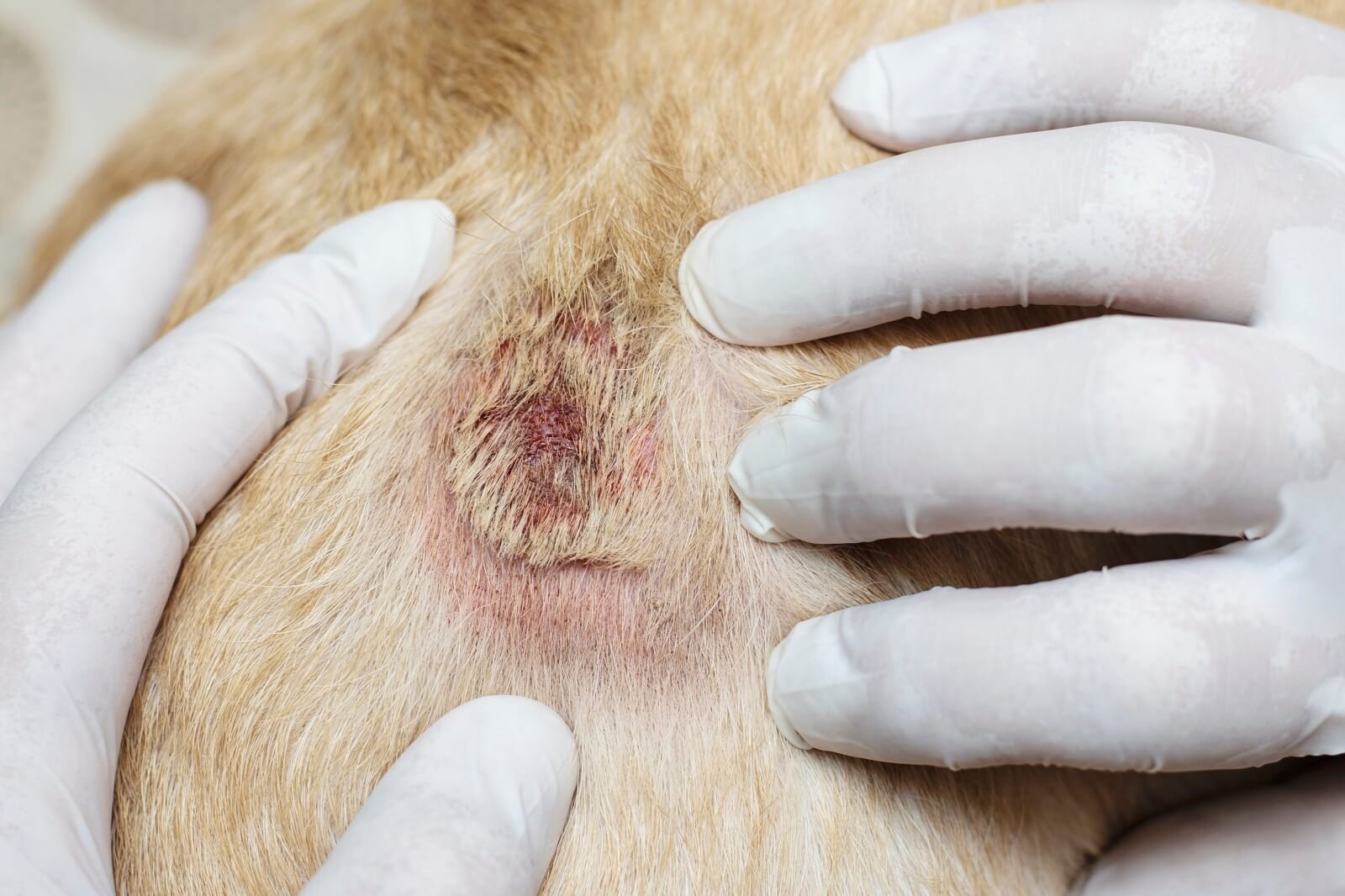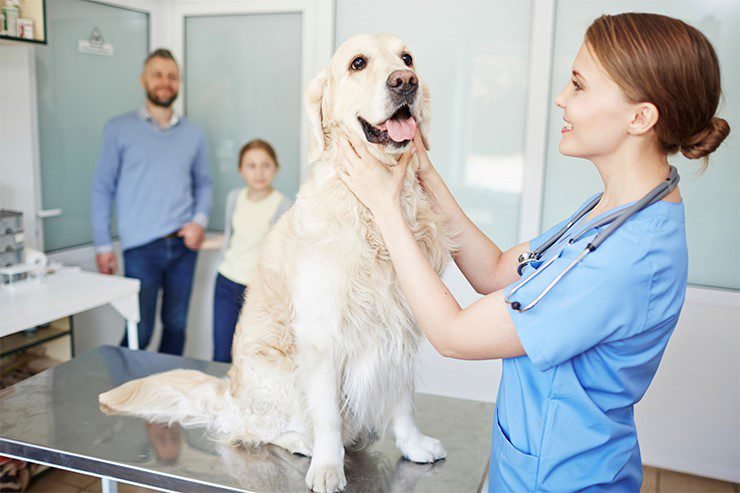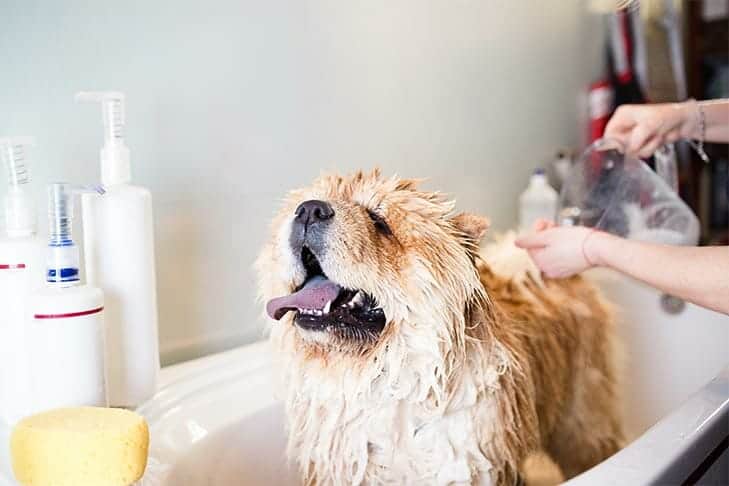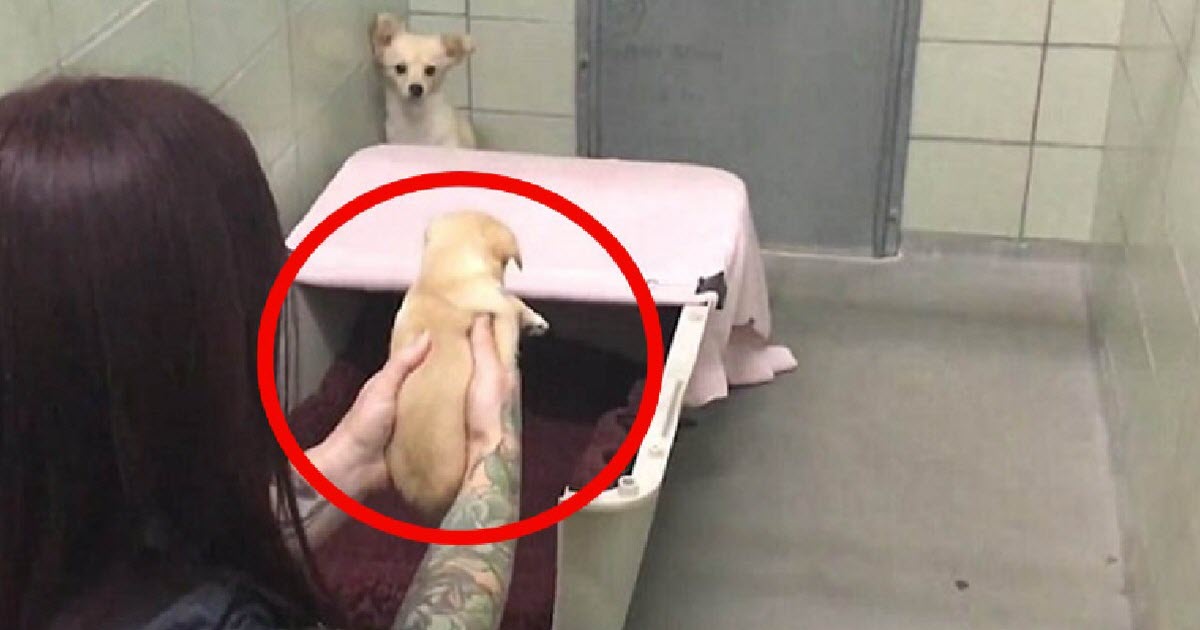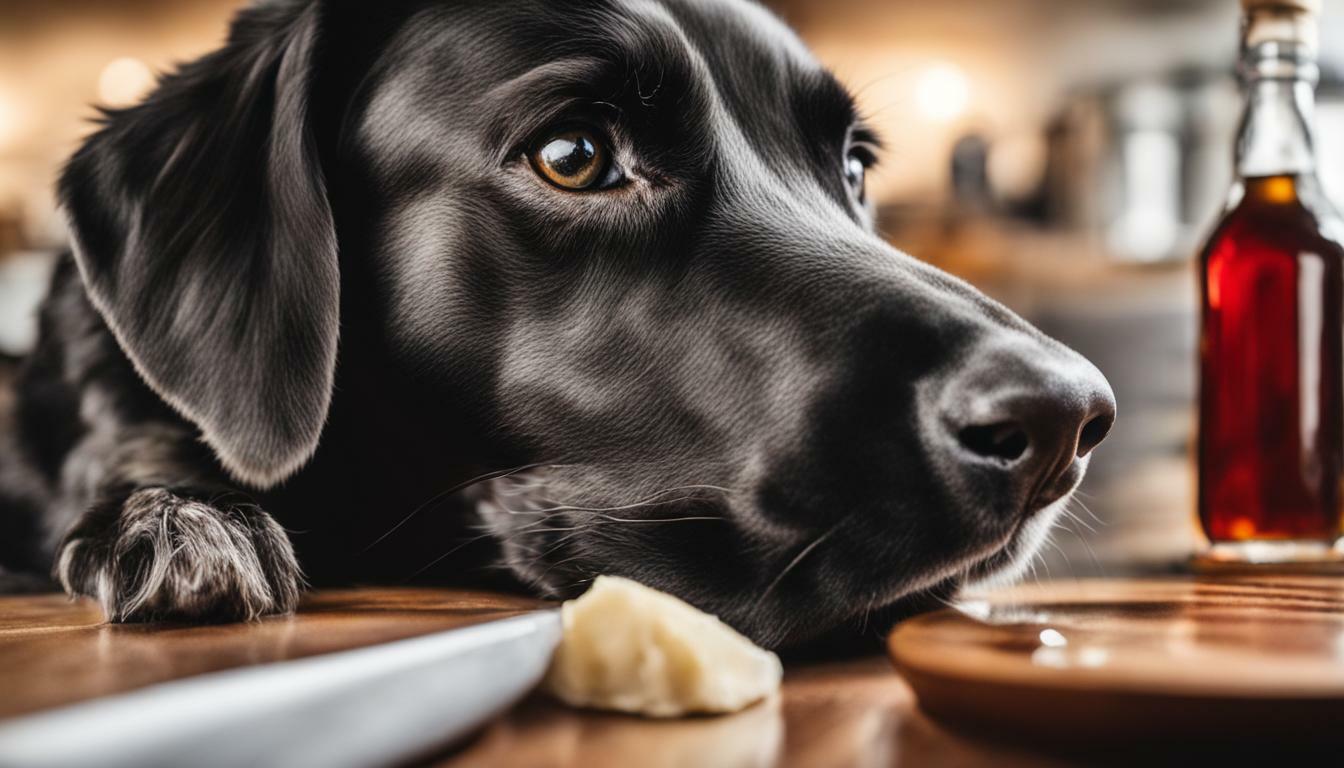Ant bites are typically just a tiny annoyance to humans, but the effects can be far more painful when your dog gets bit by an ant. That’s because most ants have specialized pincers or mandibles capable of puncturing the skin and delivering venom into the bloodstream of their targets, including your four-legged friends. Ant bites aren’t the most dangerous insect bites out there, but they can still be irritating and cause some problems if not treated properly.
If you want to know how to treat ant bites on dogs and how ant bites can impact your dog’s life, we suggest you read on. In this article, we’ll discuss why ants bite dogs, how to tell if an ant has bitten your dog, how to prevent ant bites, treat ant bites, and what you should do if it happens to you or your pet. The goal is to provide relief and ensure an allergic reaction does not happen.
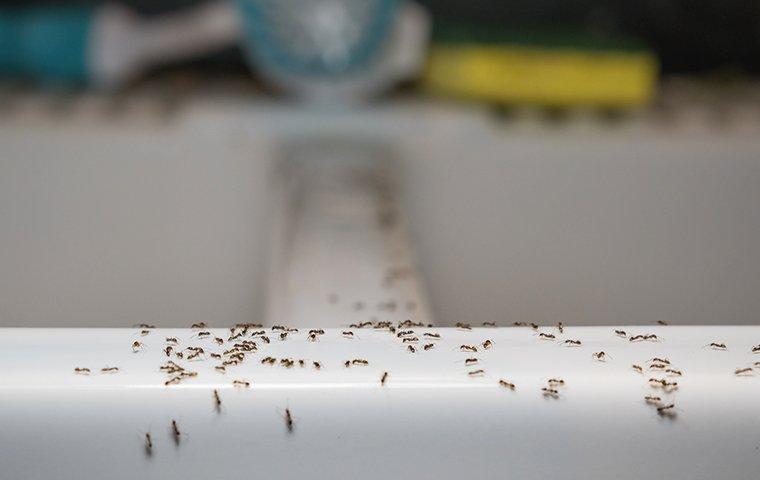
How To Identify Ant Bites
Dogs are curious by nature, and you may not notice it when they start digging through ant mounds when you’re not looking. Pet owners will notice that ant bites on dogs usually appear as small, red bumps. Ant bites on puppies may be itchy, but they are not typically painful. If your dog has been scratching a lot, you may notice the spots in areas where he has been scratching. If you see your dog biting or licking at his skin, it’s a good idea to check for ant bites. If you think ants have bitten your dog, you should watch him closely and ensure he does not show any distress.
Things to look for: facial swelling, difficulty breathing, pale gums, any type of anaphylactic reaction, etc. Contact your veterinarian immediately if you notice your dog’s symptoms include these or anything else out of the ordinary.
Ants bite when they feel threatened, and can carry infectious diseases, produce venom, and their bites can get infected if scratched or licked, especially around the paws. Keep an eye out for any signs of infection and get veterinary attention for your pet if needed.
Types Of Ants That Bite Dogs
If you’re like most dog owners, you probably don’t think twice about the odd ant bite here and there and usually assume black ants bite dogs. But did you know that different ant bites can affect your pet? Here’s what you need to know about ant bites on dogs.
Five main ant bites can affect dogs: fire ants, bull ants, red ants, carpenter ants, and green ants.
- Fire ants are the most dangerous type of ant for dogs. Fire ants tend to be confused with red ants. They have an excruciating sting that can be fatal in some cases. The good news is that fire ant typically only live in the southern United States and are rare in other parts of the country.
- Bull ants usually live near waterways or wetlands. They also have a painful sting but aren’t as harmful as fire ants.
- Green ants are less common than other varieties but may still cause harm to dogs if they get bitten often; green ants usually prefer shady areas near grassy lawns or leaf litter rather than open areas like sidewalks.
- Red ants, or red harvester ants, bites are similar to fire ants and are just another name for them.
- Carpenter ants burrow themselves in wood and are far less likely to concern themselves with your dog. They cause more damage to wood than your dog’s body, so while you may want to call pest control, they don’t damage your property; they’re of little concern to your dog.
Severe allergic reactions and bites from multiple ants at once can also result in injury. If you notice redness around your pet’s mouth, drooling, vomiting, wheezing, scratching at the affected area, or excessive licking, it could mean they were bitten by one of these insects. It’s essential to contact your veterinarian right away so that proper treatment for your pet can be administered.
How dangerous are ant bites?
While ant bites are not as dangerous as a bee sting, they can still cause your dog some discomfort. If your dog is bitten by an ant, you may notice him licking or scratching the affected area. He may also have a mild allergic reaction, swelling, or hives. In rare cases, ant stings can cause anaphylactic shock, a life-threatening condition. You should seek medical attention if this happens to your pet.
Fortunately, there are several things you can do at home to help ease your pup’s pain and speed up his recovery. If an ant has bitten your dog, you can reduce pain by soaking the area in cold water. A cold compress against the affected area will relieve your dog from the stinging sensation.
An over-the-counter antihistamine such as Benadryl can also help remove the burning sensation from bitten areas; always seek veterinary advice on the proper dosage for your dog’s body weight.
Is it necessary to visit a doctor?
If your dog displays any signs of illness or extreme symptoms, it’s always best to be cautious and call your vet immediately. This is especially true if the bite is on or near their face, as there could be a risk of infection. Some topical treatments you can apply at home may alleviate the discomfort; however, they will not cure the problem.
If you’re unable to get in touch with a veterinarian for medical advice, then read our guide on what to do when your dog gets bitten by an ant below:
· Apply an ice pack or ice cubes wrapped in a towel on the bitten area to reduce swelling -If you have pain relief medication at home, give your dog one dose per ten pounds of body weight (i.e., 10mg per 10 pounds).
· To help ease itching, rub oatmeal over the skin and paws and let it dry before rinsing off in a cold water bath. You can also add baking soda to the mix. Make sure to keep pets away from ants while they have oatmeal on their skin, as ants will sense this and bite again.
· As long as your dog tolerates it, you can keep an ice pack wrapped around the affected area. You can also soak the area in apple cider vinegar or sprinkle some baking soda to help with itching.
· Gently clean any wounds with soap and water before applying antibiotic cream or petroleum jelly. Cleaning wounds helps prevent infections and helps promote healing. You should also monitor your pet for signs of infection such as redness, pus, or drainage.
· The second course of antibiotics may be necessary if symptoms persist more than three days after starting treatment.
· Monitor your pet’s bites daily to ensure they are healing correctly without signs of a secondary bacterial infection such as oozing pus or redness around the wound area. You may need medical intervention if you see swelling, raised bumps, or your dog is acting as though they’re in intense pain. But most often, you can apply appropriate first aid at home yourself.
· You may wish to place an Elizabethan collar, also called an e-collar, on your dog to prevent licking of affected areas. Dogs are most prone to licking at their lower legs, so you may not need this step if the bitten area is hard to reach for them.
Prevention Measures Against Ants In Homes With Pets (Dogs)
To prevent ants from getting into your home and biting your dog, start by sealing up any cracks or openings in your home’s foundation. You can also try using a natural ant repellent like diatomaceous earth or citrus oil. If you have an ant problem inside your home, try baiting them with sugar water or honey.
Outside, keep your yard clean and free of food debris that might attract ants. Keep anything outside, such as pet bowls and kennels, off the ground to avoid ants coming out of the bed onto them. Use ant spray on your pet’s bedding if they are sleeping outdoors, but make sure it is safe for dogs before applying it (e.g., use Citronella).
Final Thought
Ant bites on dogs can be more than just a nuisance. If your dog has a severe reaction to an ant bite, it’s essential to seek professional medical help immediately from your vet. In the meantime, there are some things you can do at home to provide your dog with relief. Most symptoms can be easily managed with the right supportive care at home.
Be sure to keep an eye on the affected area and look for any signs of infection or swelling, as these are symptoms that might be better treated at your vets, such as any respiratory distress or trouble breathing or any severe allergic reactions your pet has to an ant bite.
Your vet will know the best treatment for your pets if an ant ever bites them. With proper care, your dog should make a full recovery.
Frequently Asked Questions
What can I put on my dog for ant bites?
A drop or two of honey or olive oil can also be used by pet parents to relieve the itching caused by ant bites. Make sure to stop your dog from licking the bite wound; an e-collar will assist in this. To minimize swelling, you can also apply an ice pack or cold compress wrapped in a towel to the bite site.
How do dogs react to ant bites?
(Bullet points) Lameness, hives, chewing or licking at the affected area, swelling, vocalizing/whining, and an inability to calm down are possible ant bite and sting symptoms. A dog experiencing an anaphylactic reaction can have (bullets) vomiting, exhaustion, pale gums, and collapse.
Are ants harmful to dogs?
Ants. Ants can sting and harm dogs and cats, irritating the skin in the process. Due to the possibility of an allergic reaction from their venom, fire ants pose a particular threat to your pets.
Can ants give dogs bumps?
What Are Stings and Ant Bites? An ant's mandibles, or mouth parts, pinch the dog's skin to cause ant bites, which appear as red, raised lumps. Although some ants' bites may draw blood, most ant bites are not thought to be dangerous, despite the fact that they can be uncomfortable and itchy.




